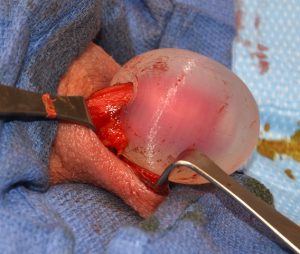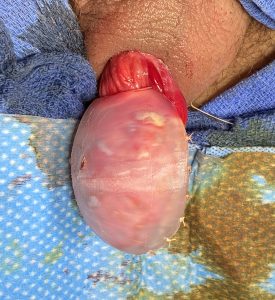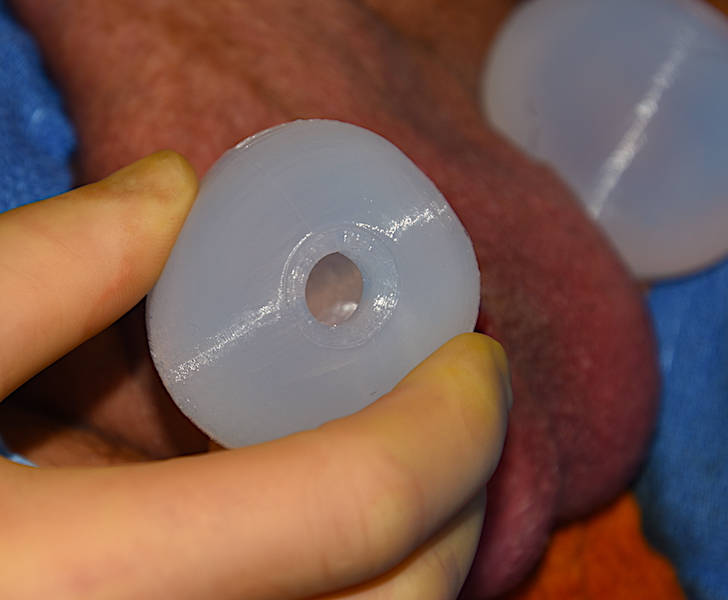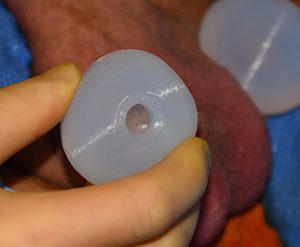Testicular enlargement for aesthetic enhancement can be done with one of two implant techniques…side by side and a wraparound concept. The choice between the two depends on the natural size of one’s testicles. With very small testicles (3.5cms or less) displacement by much larger sized implants (the operative words here are much larger) is usually best and has the least risk of complications. With larger testicles the side by side method may not adequately displace or overwhelm the natural testicles and an unnatural appearance of four testicles may result. This is where the wrap around implant concept has its role in testicular enlargement.

Theoretically once the implant opening snaps back down to its original small size, the testicle should not be able to get back out. But this is not always true. The smooth inner surface of the implant and the natural compressibility of the testicles can make it slide back out. This risk is enhanced when two issues exist, 1) the wall of the implant is fairly thick and 2) there is a mismatch between the size of the inner chamber of the implant and that of the testicle. This second one is the most important. If the natural size of the testicle is slightly bigger than the inner chamber of the implant, that is a recipe for postoperative extrusion. At the time of surgery it may seem secure but the compression of the implant on the testicle and its natural smoothness make for it being able to slip back out.

In the case of a smaller testicle than the inner chamber (which is very uncommon) the entire inner chamber needs tone downsized. This can only be accomplished by splitting the implant in half, removing full thickness wedges of material along the splits and then suturing it back together.
Dr. Barry Eppley
Indianapolis, Indiana




